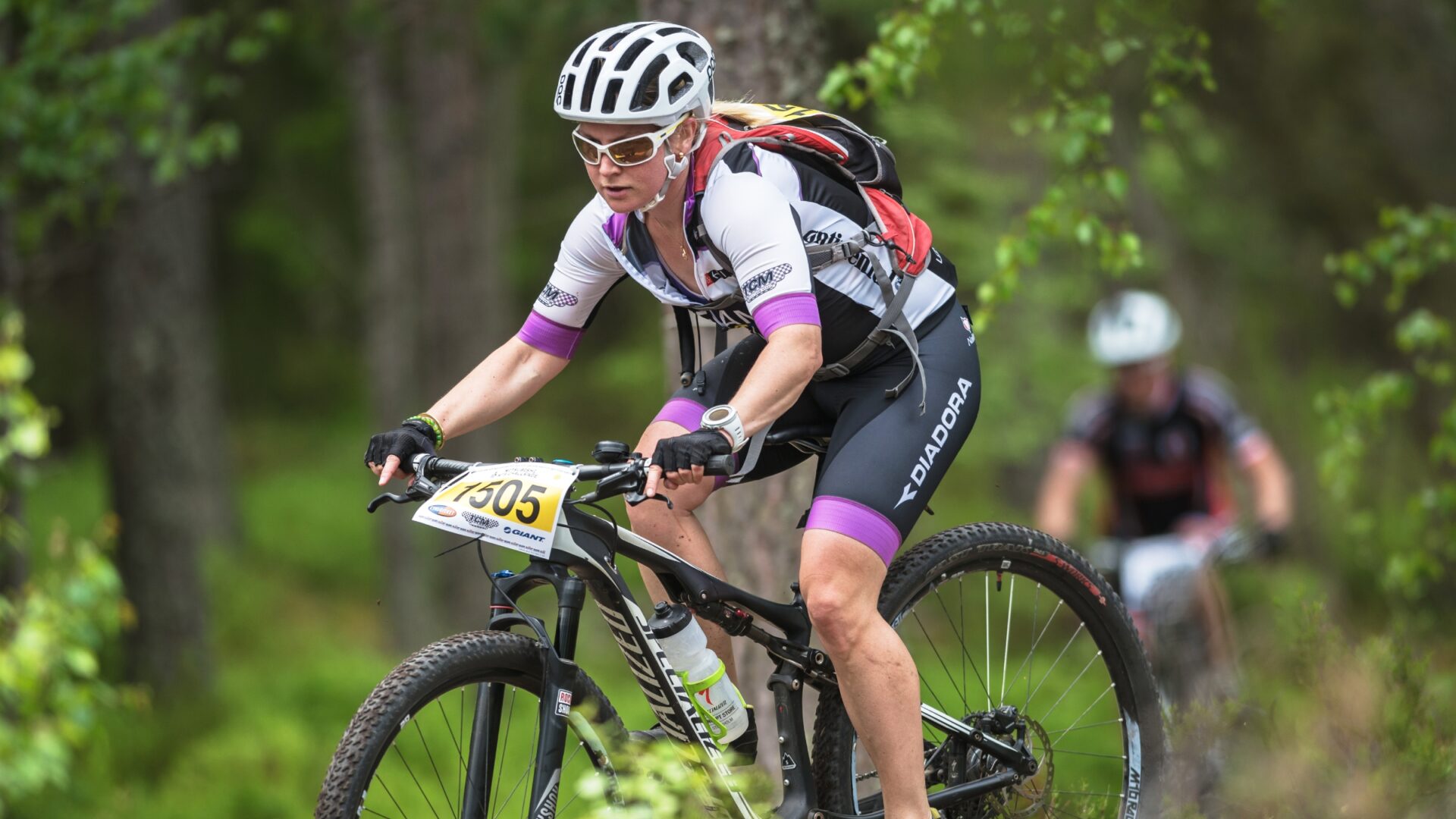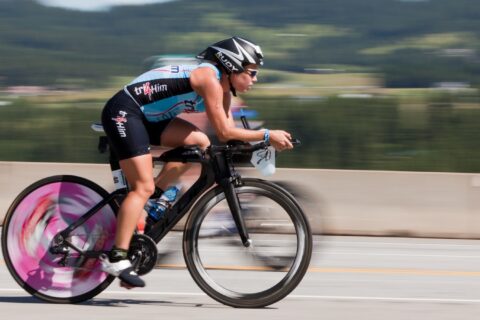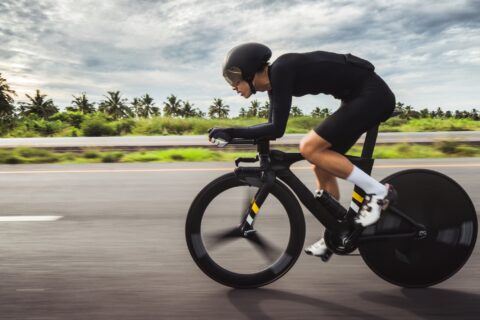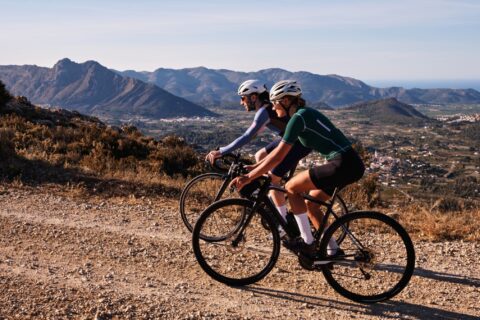Gravel riding often diverges from traditional road cycling by incorporating elements from mountain biking. One innovative solution gravel riders have increasingly adopted is to move away from water bottles and use backpacks with built-in reservoirs for hydration. These hydration packs offer several advantages:
- Storage Capacity: Gravel riders typically carry more spares and tools to cope with demanding terrain. The packs provide ample space for these necessities.
- Weather Adaptability: Long days on gravel can bring changing weather conditions, and packs help riders prepare for these fluctuations.
- Performance Benefits: In racing, hydration packs may offer faster nutrition exchanges at aid stations and there’s anecdotal evidence that they could improve aerodynamics.
However, these benefits come with some drawbacks:
- Weight and Complexity: Hydration packs can be heavy and complicated to manage.
- Aerodynamics: Packs with many straps and pockets can be less aerodynamic.
To address these issues, the “hydration jersey” has emerged. This race-specific kit incorporates a pocket for hydration bladders, mitigating the downsides of traditional hydration packs. (This is a solution that I’m quite familiar with, having developed a hydration jersey for PEARL iZUMi-sponsored gravel pro Jake Magee in 2019.)
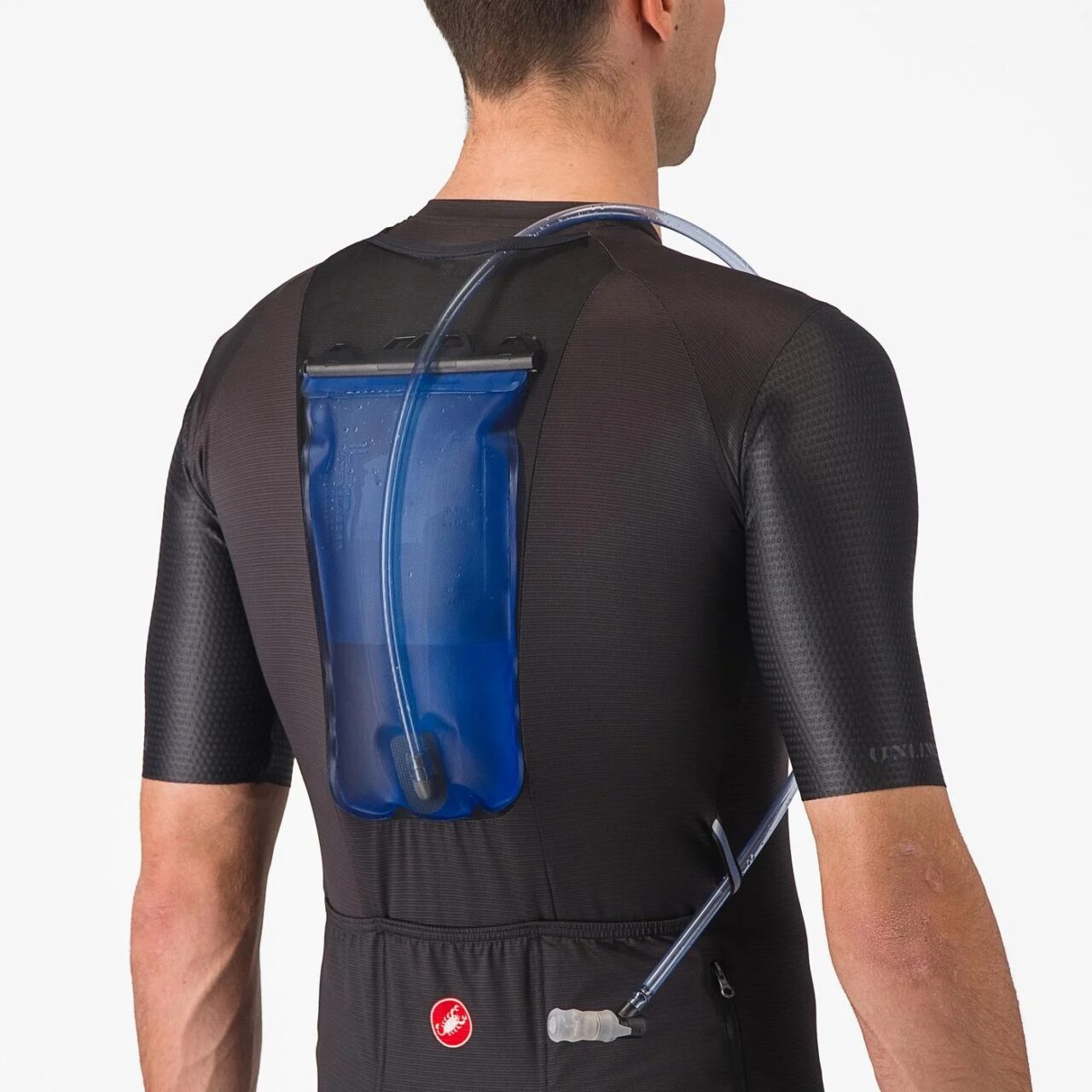
With more and more gravel riders turning to wearable hydration, some have experimented with filling these bladders with cold water or ice to improve heat management in training or racing. But is there really a benefit when compared to a standard jersey?
Investigating heat management
Heat management is critical for performance, alongside sufficient caloric intake. Heat balance, though less commonly discussed, is crucial for optimizing performance. For instance, sport scientists balanced heat and humidity in Bradley Wiggins’ hour record attempt to maximize performance by improving aerodynamics and heat dissipation.
RELATED: Exercise in the Heat Pathway
Heat storage can be calculated by considering all the elements that contribute to our ability to balance heat:
- Metabolic: Heat generated by working muscles.
- Radiant: Heat exchange via charged particles, such as sunlight.
- Convective: Heat exchange through a substance, like air or water.
- Conductive: Direct heat transfer between objects, such as a metal object on a hot pan.
- Evaporative: Heat loss through sweat evaporation—the most powerful method for humans.
As an equation, heat balance appears like this:
Heat Storage = Metabolic Heat Production ± Radiant ± Convective ± Conductive − Evaporative Heat Exchange
For radiant, convective, and conductive exchange, heat can have a net flow either toward or away from the athlete depending on factors like skin and core temperature, as well as ambient conditions. Evaporative exchange always carries heat away from the body.
Heat balance with a standard jersey
To illustrate, consider a 160-pound rider pedaling at 200W with average efficiency (22%) in a hot (90°F) and humid (50%) environment:
| Metabolic Heat Production | 709 watts |
| Radiant | +180 watts |
| Convective | (-350) watts |
| Conductive | 0 Watts |
| Evaporative | (-539) watts |
| Net Balance | 0 watts |
Granted the above table contains some assumptions, it illustrates that a rider can remain in relative heat balance at a reasonably high sweat rate of 0.8L per hour.
Heat balance with a hydration pack
If we investigate the effect of covering a portion of the back with a hydration pack, then we see some benefit (less radiant gain because the pack protects the back from the sun), however, the loss of evaporative and convective area results in 99 watts of heat stored by the body for the same sweat rate (0.8L/hr).
| Metabolic Heat Production | 709 watts |
| Radiant | +147 watts |
| Convective | (-287) watts |
| Conductive | 0 watts |
| Evaporative | (-470) watts |
| Net Balance | +99 watts |
Here, we do not calculate additional losses to conductive transfer because of the insulating effect of the pack against the skin.
RELATED: Fast Talk Episode 21—Managing Heat
Heat balance with a cold bladder in a hydration jersey
The big question, however, is what happens to the heat balance if we place a cold bladder of water against our skin in a hydration jersey? It takes ~0.5W of energy to raise 0.75L of water by 1°F in 1 hour. Why 0.75 liters? The Castelli hydration jersey holds a 1.5L bladder, and we’re assuming for this calculation that it was half full for the duration of the hour.
Accepting this, if we raise the bladder water from 32°F to skin temperature, we can expect a cooling of only 29W when maintaining 0.8L of sweat/hour. As a result, the hydration jersey has a net heat balance of 70W, which is improved compared to the hydration pack but still trails the jersey-only condition of 0 net watts.
| Metabolic Heat Production | 709 watts |
| Radiant | +147 watts |
| Convective | (-287) watts |
| Conductive | (-29) watts |
| Evaporative | (-470) watts |
| Net Balance | +70 watts |
Choosing the right hydration solution
Should gravel riders use wearable hydration? More often than not the answer is no. Based on anecdotal research, aerodynamic hydration packs save minimal watts (0 to 5W), and hydration jerseys are unlikely to represent enough aerodynamic gains to compensate for the decreased power output due to heat storage. At low temperatures, heat balance may not be an issue, but I’d rather carry less water weight instead of compromising my heat balance.
Interestingly, a bottle in the center jersey pocket can save 1 to 3W while minimizing any heat-balance issues. This may be the safest bet for performance in the heat!
RELATED: Fast Talk Episode 276—How to Be Aerodynamic without Sacrificing Power
Caveats
This theoretical exercise involved assumptions and didn’t account for all factors, including the increased metabolic cost of carrying extra weight, insulative properties of fabrics, and the mental benefit of a cool bladder against an athlete’s back on a hot day. Riders should test these solutions themselves, ensuring clear performance improvements before choosing a hydration pack or jersey.
